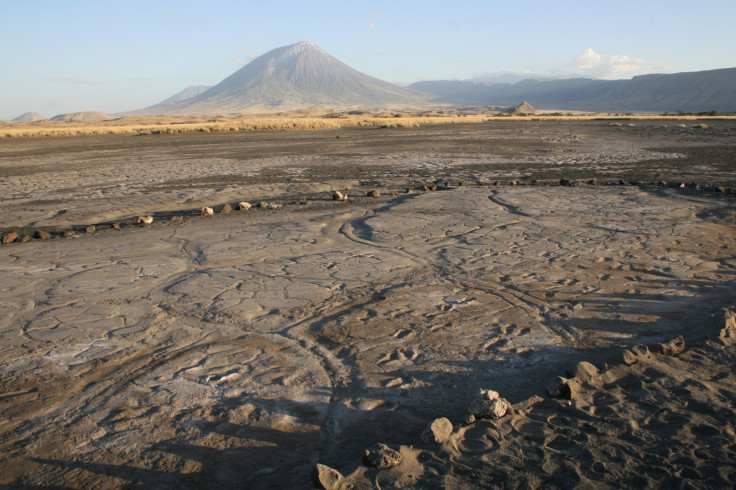Ancient footprints near Tanzania's Mountain of God volcano reveal social lives of our ancestors
Over 400 footprints dating to between 5,000 and 19,000 discovered at mudflat of Engare Sero.
Hundreds of ancient human footprints have been discovered near a volcano in Tanzania, providing scientists with an insight into the social lives of our ancestors. The collection of footprints – numbering over 400 – are located on the mudflat of Engare Sero, around nine miles from the Ol Doinyo Lengai volcano, known as Mountain of God by the Maasai.
The footprints were first discovered by a local villager in 2006 but they did not come to the attention of scientists for another two years. While research began on the site, a number of delays meant analysis stalled. The team has now documented these challenges in a study published in Palaeogeography, Palaeoclimatology, Palaeoecology.
A decade on, the footprints have now been excavated, with support from the National Geographic Society's Committee for Research and Exploration. The discovery represents the largest collection of ancient Homo sapiens footprints in Africa.
Uncovering our ancestors' past
The Engare Sero footprint site, on the southern shore of Lake Natron, is the size of a tennis court. Some of the tracks show early humans jogging through the mud at a pace of around 4.5 miles per hour, National Geographic reports.
Other footprints reveal a slower pace, with one set of prints pointing to a person with what appears to be a broken toe. It also indicates a group of a dozen women and children crossed the mudflat together in a south-westerly direction.

The detail of the footprints will provide scientists with an extraordinary insight into the social lives of these early humans. Briana Pobiner, from the Smithsonian Institution's Human Origins Programme, told the magazine: "The sheer number of footprints that were all created at essentially the same time allows us to directly investigate social aspects of the lives of these ancient humans."
William Harcourt-Smith, a paleoanthropologist at the City University of New York, added: "It's a very complicated site. There's one area where there are so many prints, we've nicknamed it the 'dance hall,' because I've never seen so many prints in one place. It's completely nuts."
Preservation
Initially, the team thought the footprints had been preserved via volcanic ash from Ol Doinyo Lengai, which would have put them at 120,000 years old. However, later analysis indicates the prints were made from ash-rich mud that had washed off the volcano's flanks, forming the Engare Sero mudflats.
The mud would have dried within hours or days. Another flow of debris from the volcano then buried the prints, preserving them in time. This allowed the team to date the footprints to between 5,000 and 19,000 years old.
Now the excavation has been completed, the team is hoping the paleoanthropology analysis will follow. Research leader Cynthia Liutkus-Pierce, from the Appalachian State University, also hopes to establish a long term preservation plan for the site. "God forbid anything happens to that site, [but] we essentially have the ability to replicate it with 3-D printing," she said.
"The first time we went out there, I remember getting out of the vehicle, and I teared up a little bit. Human origins is a huge interest of mine: where we came from, and why we are who we are. It was definitely emotional to see our own history in this."
© Copyright IBTimes 2025. All rights reserved.






















